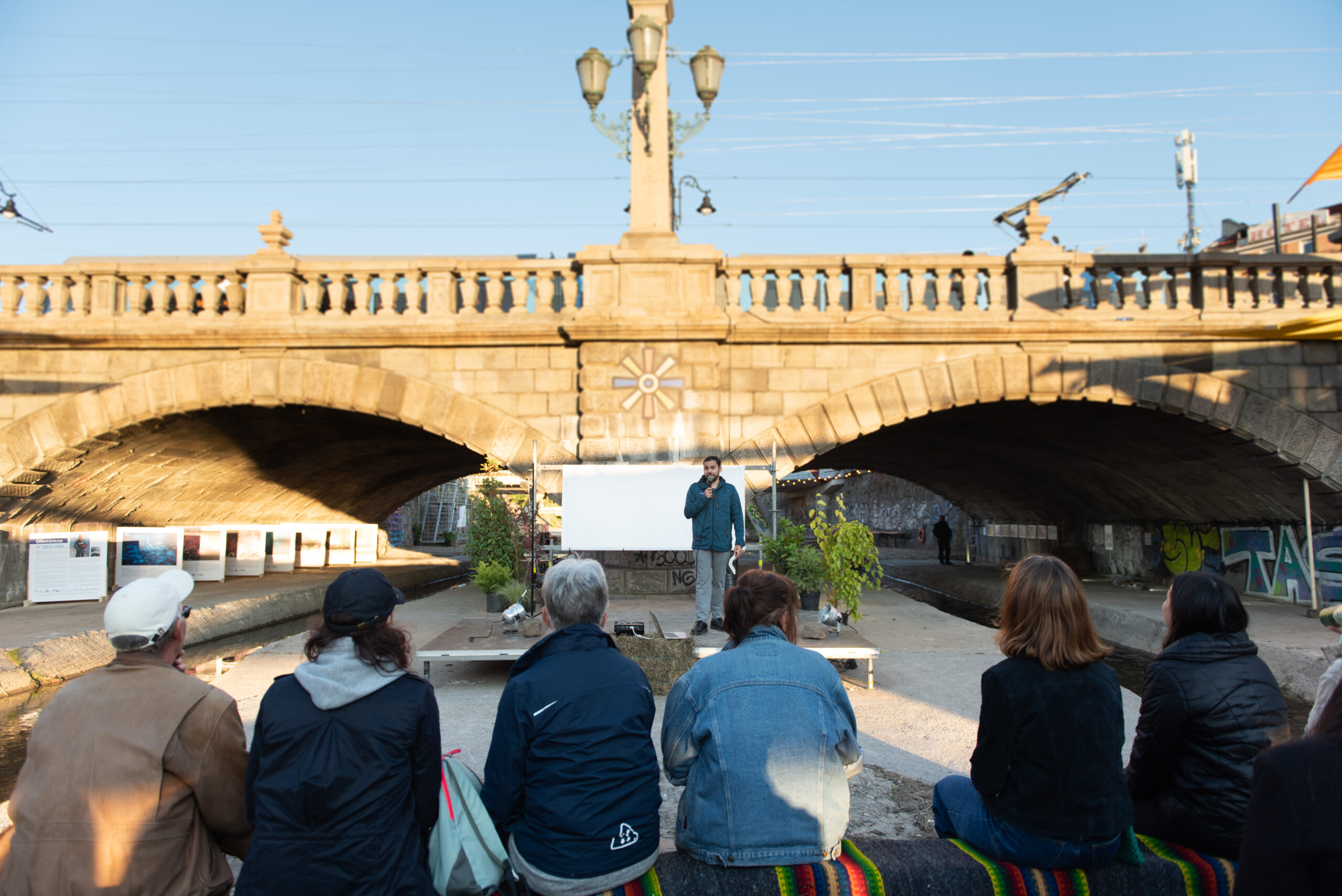Every place has different priorities, history, or culture and challenges like sustainability need to be addressed according to the local context. Achieving green transition needs to be done in a holistic way taking into consideration jobs, health, wellbeing, mobility, and social rights. Nature must be our biggest ally in this transition, and rewilding can provide effective solutions both in terms of rural and urban contexts.

Approaching COP26, society and policymakers have high expectations for the conference. Climate change and nature emergency should not be seen as stand-alone topics, and they include aspects such as housing, jobs, transport, education and health. Moreover, cities as the biggest emitters of greenhouse gases, have a particularly important role to play in the process of mitigating climate change. So we were very happy to accept the invitation of The Collective and talk about rewilding in urban context at the festival “Rivers of Sofia”.
Industrial progress has made us believe that we as species are detached from nature and for too long we have been developing cities without taking into account the ecological impact. But cities are also ecosystems, and they are not isolated from other ecosystems. They are connected to other towns and villages in their larger metropolitan areas, and what affects the city, also affects the nearby ecosystems. Likewise, urban and rural areas have a lot to learn from each other and particularly biodiversity could be a great ally for cities. Because if we think seriously about climate and we exclude biodiversity, we will miss a key component of the whole picture. That’s why rewilding is very effective in addressing some of the challenges that cities face.
Barcelona’s bet on fostering biodiversity
An interesting case of urban rewilding, which we discussed at the Rivers of Sofia was Barcelona’s quest to embrace nature. “Hotels” for insects, biodiversity atlas, green roofs, or just planting wildflowers are some of the creative responses that the Spanish city is adopting to become a more sustainable and healthy city. Just a month ago, the city was also among the winners of the New European Bauhaus Awards for its “Floating” Wild Garden. The roof of the historic building of Els Porxos d’en Xifré was transformed into a wild garden to enhance the biodiversity of the city. The garden features mainly native Mediterranean plants, which provide space for insects, bird feeding and nesting. In general, the local authorities aim to rewild additional 5000 m2 of urban land.

Rewilding in the Eastern Rhodopes’ biggest city
Likewise, the Eastern Rhodopes host a wonderful example of rewilding in an urban context. A colony of herons and other birds are nesting in close proximity to the centre of Kardzhali. The heron colony is located in a heavily urbanized zone and helps residents to reconnect and return to nature. Something which we have forgotten during the industrial progress of the last decades. In fact, how we will share the planet with other species is crucial for our survival, and it is important to understand the multiple ways under which we can protect nature and give it more space.

Does rewilding have a future in urban context?
Rewilding is often seen mainly in a rural context but it can be a great solution for cities. It helps us to take care of our species, it is very effective in absorbing carbon but also enhances the local’s wellbeing. The benefits can be so broad, including creating a healthier society and eventually driving down some of the pressure on our health services.
In adapting to and mitigating climate change, cities have to “construct” health. It is viable to have net-zero cities through upgrading the transport system, improving energy efficiency or retrofitting existing buildings, however focusing only on decarbonisation won’t be enough. To be able to have a human future, we have to guarantee and pay more attention to the non-human future. To create a future where humans and nature coexist.
Author: Polihron Karapachov